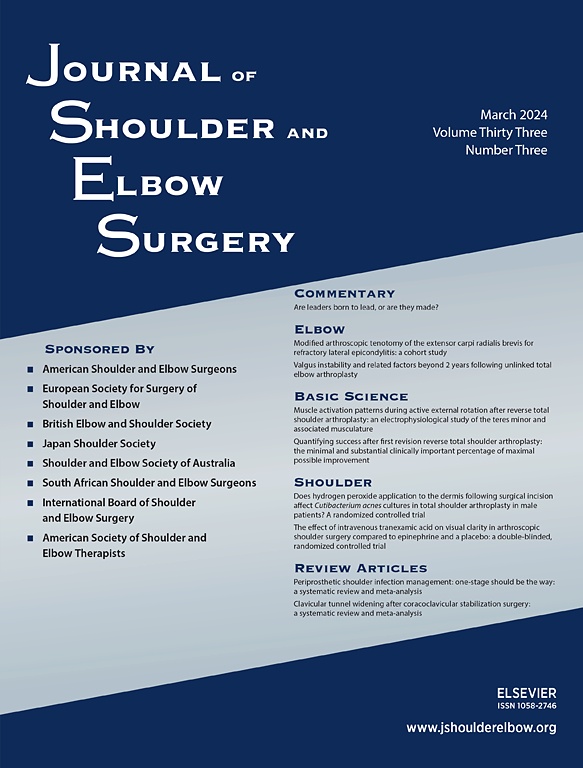
An isolated bioinductive repair vs sutured repair for full-thickness rotator cuff tears

An isolated bioinductive repair vs sutured repair for full-thickness rotator cuff tears
An isolated bioinductive repair vs sutured repair for full-thickness rotator cuff tears: 2-year results of a double blinded, randomized controlled trial.
J Shoulder Elbow Surg . 2024 Sep;33(9):1894-1904.Synopsis
Sixty patients with small/medium full-thickness supraspinatus tears (≤2.5 cm) and intact rotator cables were randomized to receive either isolated bioinductive repair (IBR, n=30) or conventional sutured repair (n=30). The primary outcome was histologic tendon quality at 6 months. Secondary outcomes included tendon healing (via MRI), tendon thickness, pain, American Shoulder and Elbow Surgeons (ASE...
To view the full content, login to your account,
or start your 30-day FREE Trial today.
FREE TRIAL
LOGIN
Forgot Password?
Explore some of our unlocked ACE Reports below!

Learn about our AI Driven
High Impact Search Feature
Our AI driven High Impact metric calculates the impact an article will have by considering both the publishing journal and the content of the article itself. Built using the latest advances in natural language processing, OE High Impact predicts an article’s future number of citations better than impact factor alone.
Continue



 LOGIN
LOGIN

Join the Conversation
Please Login or Join to leave comments.